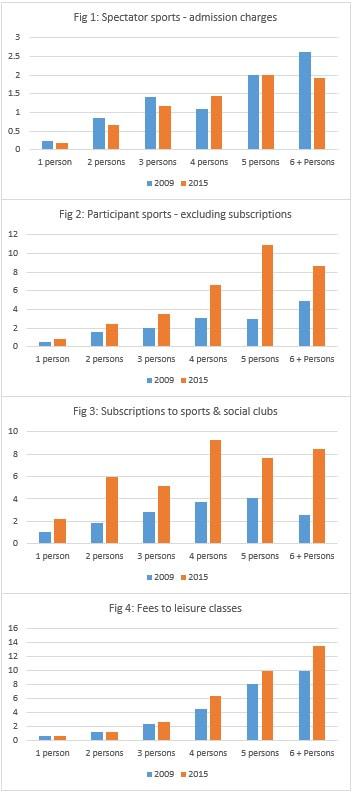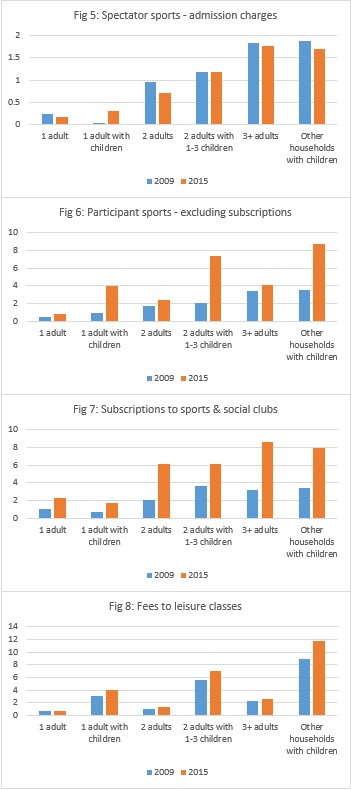Continuing my series of blog posts on Irish Household Sports Expenditures (previous posts here, here, and here), the following looks at household composition and household size. One would expect that the more persons in a household the larger the level of expenditure on sports related items but what might be of particular interest is the effect the composition of the household has on sports related expenditures, for example, households with children versus households without children.
We first examine the effect of household size using the figures below (Figs 1-4). The trends observed in examining the data in previous blogs can be seen here once again, that is, decreases in spending on spectator sports between 2009-10 and increases in the other categories of sports spending over the same period, most notably for sports participation and subscription to sports and social clubs.
It is probable that the patterns identified above are driven to a large extent by income. I have mentioned in previous blogs that spending on sports participation and subscriptions to sports clubs has increased primarily because of increases in spending by middle and high earners. Thus the more people in a household, the more the overall level of increase in household income.
I also suggested that income may not be the only factor however. The figures below (Figs 5-8) examine the effect that household composition has on sports spending. Again, the overall pattern of decreases in spending on spectator sports and increases in the other categories of sports spending is evident across the categories of household composition.
Whether children are present in the household or not and its effect on sports expenditures is an interesting topic. The conventional view is that children can preclude a household from engaging in sport due to time constraints. What the analysis presented in this blog suggests is that it depends on the type of sports/leisure activity the household engages in. Having children in the home may be a barrier to joining a sports club but it does not necessarily mean that the household cannot engage in a form of sports participation or leisure activity. Whilst we cannot say who is doing the sports/leisure activity (it could be just the children) this is a welcome trend for the overall health of Irish households.


 RSS Feed
RSS Feed